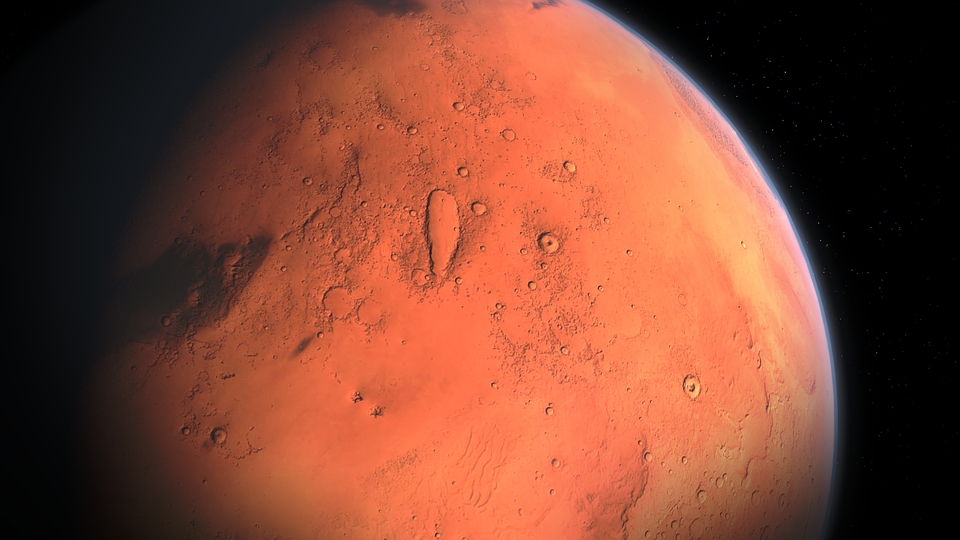Over time, we continue to learn more and more about the planets beyond our own. Recently, the Mars Reconnaissance Orbiter took a very clear set of photos of a region of the red planet, revealing what else is there to see on Mars.
Express reports that the MRO took photos of a part of the Melas Chasma region of Mars. The photos were then exhibited at the University of Arizona. The photos, according to the scientists that showcased the photos, showed the sand dunes and ancient volcanic rocks that were present on the Red Planet. The photos were taken by the High-Resolution Science Experiment, also known as HIRISE.
A collaboration between the University of Arizona and NASA, HIRISE was designed with the objective of further studying Mars and its landscape in mind. The most recent photo showed the sand dunes located in what would seem to be one of the largest canyon systems of the neighboring planet. The Melas Chasma region is within the Valles Marineris canyon system.
What makes the planet’s sand dunes very striking is the color. The sand dunes were referred to as “velvety blue” in color and are an indicator of coarse-grained sands made up of basalt, which is a kind of volcanic rock that has a high iron and magnesium content. This would be formed from lava that has cooled millions of years ago, back when Mars was an active planet.
Another question that many have when it comes to Mars is how inhabitable it is. Express previously reports that NASA astronaut and physiologist Dr. James Pawelczyk revealed the big challenges he had to face while on the Mars mission. Pawelczyk explained that they were exposed to radiation at a bigger scale.
“We also have the solar wind galactic cosmic radiation, and those really wreak havoc on the biology… When a high energy event hits DNA it pretty much shatters, and we don’t have DNA repair mechanisms that can deal with that” Pawelczyk explained.
It also bears noting that the atmosphere on Mars is only one percent the density of Earth’s and is made up of 95 percent carbon dioxide. The Red Planet also lacks a magnetic field and thus it cannot deflect the radiation that the astronauts would be exposed to, which can be very dangerous.



 Why is the universe ripping itself apart? A new study of exploding stars shows dark energy may be more complicated than we thought
Why is the universe ripping itself apart? A new study of exploding stars shows dark energy may be more complicated than we thought  Spacesuits need a major upgrade for the next phase of exploration
Spacesuits need a major upgrade for the next phase of exploration  A Nasa rover has reached a promising place to search for fossilised life on Mars
A Nasa rover has reached a promising place to search for fossilised life on Mars  Why some people don't trust science – and how to change their minds
Why some people don't trust science – and how to change their minds  The rising flood of space junk is a risk to us on Earth – and governments are on the hook
The rising flood of space junk is a risk to us on Earth – and governments are on the hook  The brain is the most complicated object in the universe. This is the story of scientists’ quest to decode it – and read people’s minds
The brain is the most complicated object in the universe. This is the story of scientists’ quest to decode it – and read people’s minds  Eggs from men, sperm from women: how stem cell science may change how we reproduce
Eggs from men, sperm from women: how stem cell science may change how we reproduce  The mystery of consciousness shows there may be a limit to what science alone can achieve
The mystery of consciousness shows there may be a limit to what science alone can achieve  Genetic diseases: How scientists are working to make DNA repair (almost) a piece of cake
Genetic diseases: How scientists are working to make DNA repair (almost) a piece of cake  Black hole, neutron star or something new? We discovered an object that defies explanation
Black hole, neutron star or something new? We discovered an object that defies explanation  Synthetic human embryos let researchers study early development while sidestepping ethical and logistical hurdles
Synthetic human embryos let researchers study early development while sidestepping ethical and logistical hurdles  Alpha, beta, theta: what are brain states and brain waves? And can we control them?
Alpha, beta, theta: what are brain states and brain waves? And can we control them?  Could a telescope ever see the beginning of time? An astronomer explains
Could a telescope ever see the beginning of time? An astronomer explains  Customizing mRNA is easy, and that's what makes it the next frontier for personalized medicine − a molecular biologist explains
Customizing mRNA is easy, and that's what makes it the next frontier for personalized medicine − a molecular biologist explains  What is minoxidil, the anti-balding hair growth treatment? Here’s what the science says
What is minoxidil, the anti-balding hair growth treatment? Here’s what the science says 































